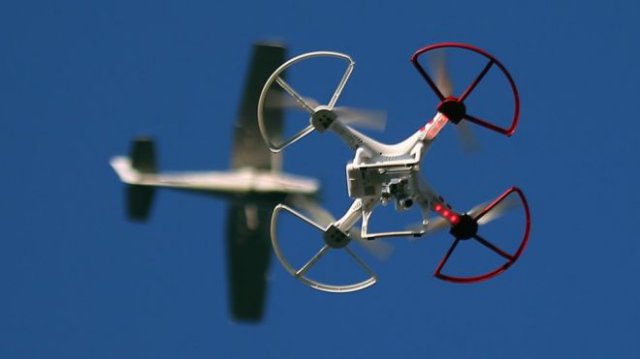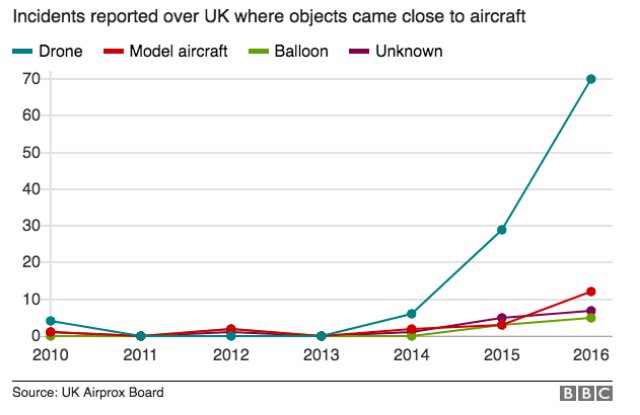
A drone flying close to Gatwick Airport led to the closure of the runway and forced five flights to be diverted. An airport spokesman said the runway had been closed for two periods on Sunday – of nine and five minutes – after the drone was sighted.
Easyjet said four of its flights were diverted, while British Airways said one aircraft was diverted to Bournemouth.
Other flights were put into holding patterns as a precaution.
Sussex Police is investigating.
The airport said: “Runway operations at Gatwick were suspended between 18:10 BST and 18:19, and again
Craig Jenkins, who was flying with Easyjet from Naples, Italy, said: “We were crossing over the Channel and it [the plane] started circling.
“It did four or five circles… before the captain said we were landing at Stansted.
“First, they said Gatwick was closed because of an incident. Shortly after, they said it was a drone.”
Mr Jenkins, from Greenwich, south-east London, said passengers were given the choice of disembarking at Stansted or waiting an hour to fly back to Gatwick.
Niamh Slatter, from Sussex, was flying from Valencia, Spain, when her BA flight was diverted to Bournemouth.
“We were due to land 15 minutes early, but ended up circling over the south coast,” she said.
“Our attempted landing at Gatwick was aborted quite late as the drone had been spotted again, so we were told that the flight was being diverted to Bournemouth.”
Easyjet apologised for the inconvenience, saying the circumstances were “outside” of the firm’s control.
How common are near misses involving drones?
The UK Airprox Board monitors near-miss incidents.
An Airprox is the official term for a situation where the distance between aircraft and their relative positions and speed were such that the safety of the aircraft may have been compromised.
There were 70 Airprox reports involving drones coming close to aircraft over the UK in 2016 – more than double the number for 2015.
There have been 33 incidents up to May 2017.

Of the 142 Airprox incidents involving drones recorded since 2010, 40 of them were near to Heathrow. Six of them, up to May, had been near to Gatwick.
Source: BBC
